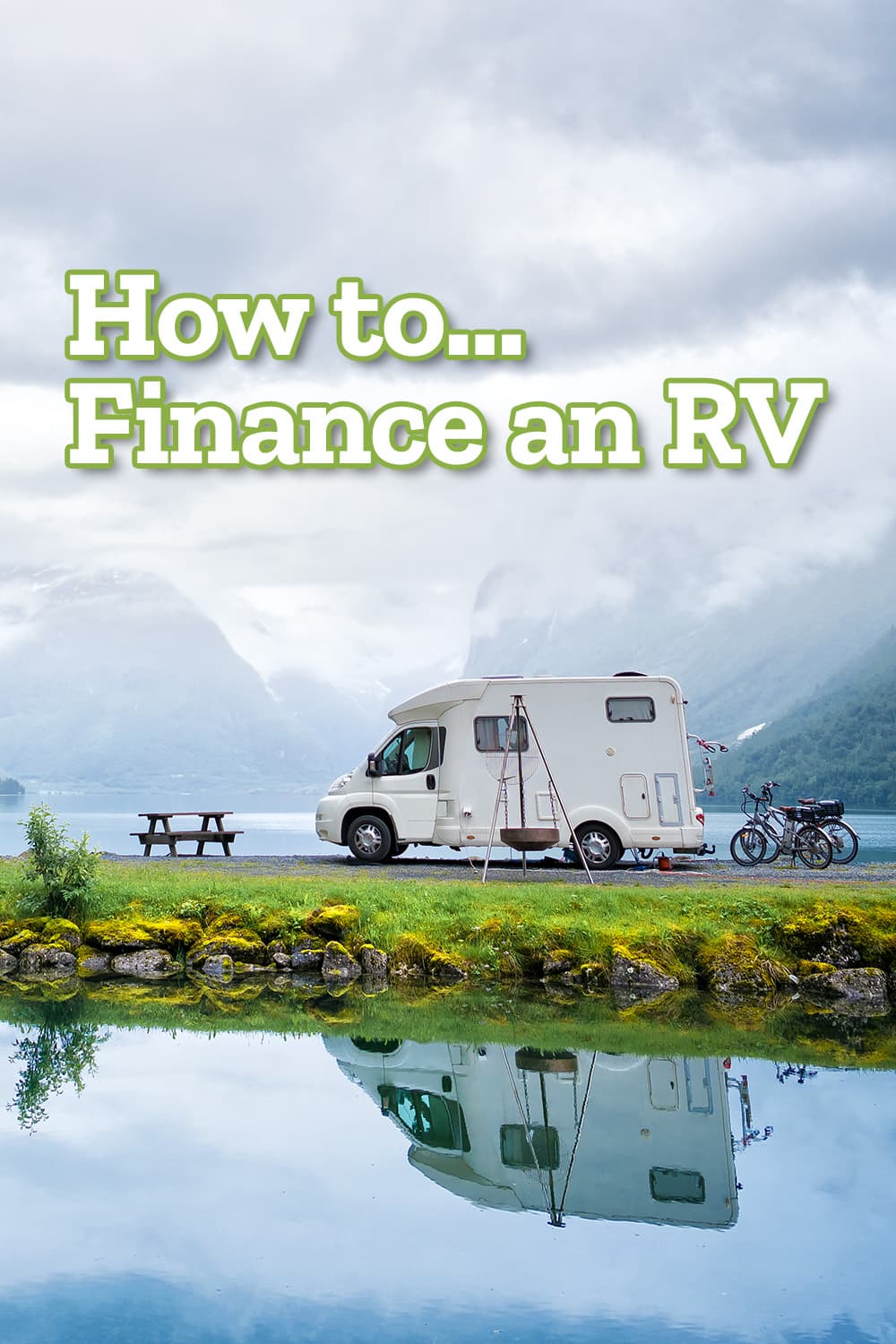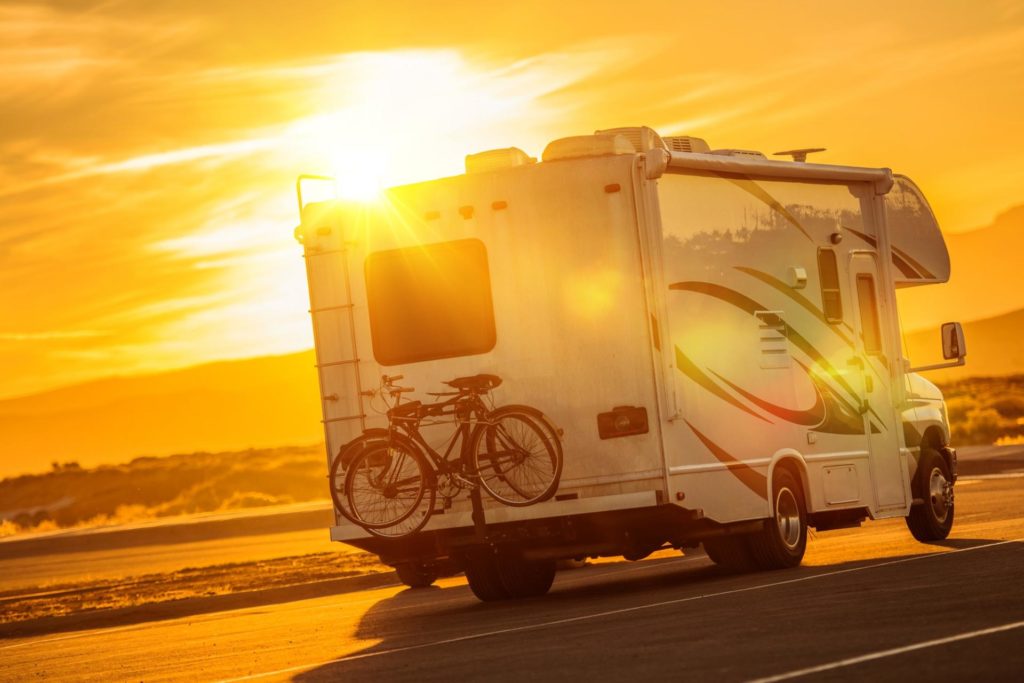Spring time is around the corner and that means that camping and RVing season is finally here. You decide that enough is enough and you finally want to get your hands on your own RV to really level up your camping experience. You go online and realize just how expensive these recreational vehicles are and figure that you would never be able to purchase one outright, but why not finance one?

What does it mean to finance an RV?
Financing a RV is essentially taking out a loan to purchase that RV of which you agree to repay over time. When financing a vehicle, you are agreeing to pay back the money you borrowed, as well as interest fees and any other possible fees that may come up within a certain time period. Loans can be provided by financial institutions such as banks, lenders, credit unions, and the dealerships themselves. Financing is available on both new and used RVs.
How does an RV loan work?
RV loans work similar to any other loans you might get. Those looking to finance an RV will send in their loan application which the lender will review and conclude whether or not you are eligible for the loan. Eligibility is based on many factors such as the size of the loan, income, credit score, down payment and more. The borrowing requirements will vary depending on how large the loan is. RV loans are often different from auto loans due to the fact that RV loans are normally much larger and complicated purchases. RV loans can range from anywhere between $25,000 up to as much as $300,000 for more luxurious RVs. The loan terms also vary depending on the amount of the loan. Smaller borrowing amounts may have terms of only 2-4 years while larger loans may have terms of 10-20 years. All RV loans will require a down payment and interest rate. A down payment is a portion of the purchase price which is paid upfront. The larger the down payment, the less money needed to borrow. Typically a down payment on an RV ranges from 10-20 percent of the RV price tag. Interest rates are the amounts one is charged for borrowing money which is normally presented as a percentage of the total amount of the loan.
Where can I get an RV loan?
RV loans are offered at different financial institutions. Some may be more beneficial to use than others depending on your situation. RV dealerships tend to be the easiest to apply to. You can typically expect a small variety of financing options which are offered by the dealership themselves known as “in house” or from partnered lenders. Choosing to use an RV dealership to finance your RV will often result in more flexibility with the vehicle price as well as APR rates. When getting an RV loan one also has the option of using an online or traditional lender. Online and traditional lenders are financial institutions such as banks, credit unions and online lenders. The benefit of a traditional lender is that you can be pre approved for a certain amount of money to borrow which will give you a better understanding of your budget and how much RV you can afford.

How can I apply for an RV loan?
Now that you know how financing works and where you can obtain loans from, you can start applying for a loan by following the steps below:
1. Determining a budget
RV prices range dramatically depending on many factors. Vehicle production year, size, brand, add on features and finishes are all factors that can impact the price of RVs. Before buying an RV, one should decide what is absolutely necessary to have as well as options that would be nice to have but not really needed. (Hint: You can use Trailer Parks Canada’s RV dealership search tools to find different brands and types of RVs to meet your needs.) This will give you an idea of how much to expect to pay for an RV of your specifications. Next you must evaluate your own financial situation and determine how much you can afford to spend on an RV. Don’t forget to take into consideration additional fees such as insurance costs, maintenance costs, storage costs, and fuel costs.
2. Determine your credit score
Your APR (annual percentage rate) will be heavily determined based on your credit score. Although there are other factors affecting your APR, credit score has the potential to ruin your chances of getting an RV as well as overcoming other factors to obtain you the RV. Essentially when applying for an RV loan, it is important to make sure your credit score is in as best shape as possible. Many traditional lenders will not approve RV loans for people with bad credit. There are many ways to potentially benefit your credit score such as paying bills on time or reducing that debt you’re carrying with you. Some lenders specialize in RV loans for people with bad credit so don’t be overwhelmed if you can’t get your credit up.
3. Save up for a down payment
Typically RV dealerships will expect an initial down payment anywhere from 10-20 percent of the purchase price. To ensure that you will be capable of providing this downpayment it would be beneficial to start saving up as soon as possible. The larger the down payment, the lower monthly payments and interest has to be paid. It is recommended to be financially aware and potentially even start budgeting so that you can have a fair amount of money for the down payment while still managing your daily expenses.
4. Search for a lender
If you happen to make the decision to finance your RV through the dealership, they will provide you with several options for you to choose from. Financing through a dealership has its perks as it is more convenient considering they will take care of the loan’s logistics, however they don’t always offer the best rates. Many RV dealerships not only partner with lenders but will offer their own in house financing which is more flexible when it comes to making a deal as well as more lenient with credit, but are often more expensive.
If you make the decision to go through a private online lender or traditional lender you will be able to be approved online or through a phone call as well as be able to be pre-approved. Being pre-approved will show the RV dealership that you are a serious buyer and in return may persuade them to be more flexible with negotiations.
Once set on the RV you are looking to purchase, you will send the purchase agreement to the lender and they will finalize the loan documentation. The lender will then wire the funds to the dealership completing the transaction. This process only occurs when using an online lender or traditional lender.
5. Negotiate
Before you fully agree to purchase the RV you’ve been wanting for long, consider negotiating with the salesperson for the best price possible or additional amenities. Many dealerships will mark up RVs based on the supply and demand chain which can make the vehicle much pricier. Attempting to negotiate with the salesperson can cut down costs which will reduce the amount of money you owe back to the lender. If the dealership won’t budge with price, you can even try negotiating for amenities such as free service, extended warranties, upgrades and add-ons.
Now you have the knowledge and understanding of how financing works, where to get loans, and how to properly apply for a loan. You are ready to finance your dream RV and take your camping experience to the next level.


